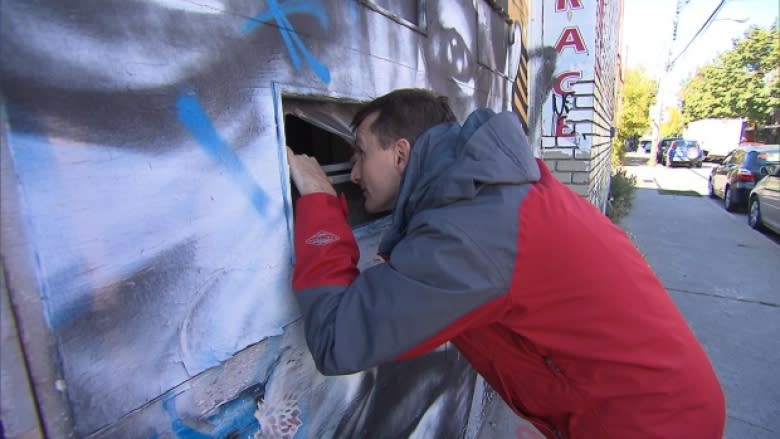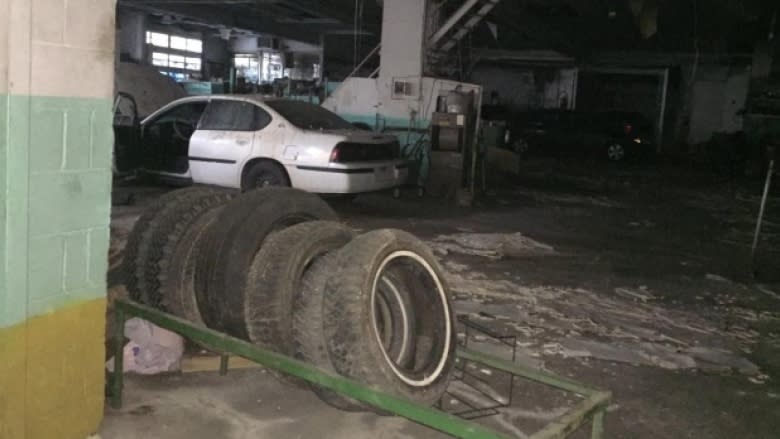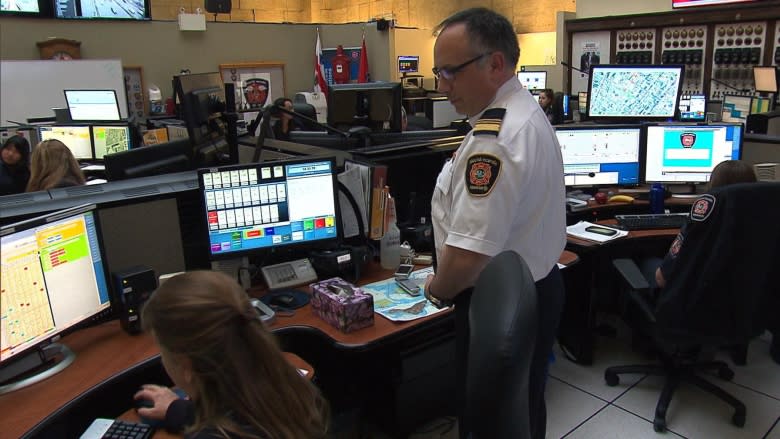Montreal fire department adds more than 100 buildings to vacant, dangerous list
The Montreal fire department says it has now corrected its list of dangerous and empty buildings, a list intended to keep firefighters safe.
It took action after a CBC Montreal investigation revealed serious omissions in the list late last fall.
Shortly after the CBC report, Quebec's workplace health and safety board, known by its French acronym, CNESST, ordered the fire department to fix it.
According to information the fire department provided last week to its union, the department discovered 118 vacant and dangerous buildings it didn't previously know about.
Those buildings are now on the list, which includes notes on any hazards that could endanger the lives of firefighters, such as weak walls, missing balconies or holes in the roof.
"Firefighter safety is our top priority," said Richard Liebmann, the Montreal fire department's acting deputy director.
"It doesn't help anybody if we kill ourselves getting to or going into a building. We want to make sure our firefighters go home at the end of their shift."
Lists didn't add up
Most of the city's boroughs and on-island municipalities keep their own lists of problem buildings.
CBC combed through them last fall and compared them to what was on the fire department's list, acquired through an access to information request.
Many potentially dangerous buildings never showed up on the fire department's list, suggesting a lack of communication.
CBC then took Chris Ross, the vice-president of the Montreal firefighters union, to see some of the missing buildings, including an unused autobody garage on the Plateau Mont-Royal, right off busy St-Laurent Boulevard.
Boarded up for years, it houses abandoned cars, tires and what appeared to be oil drums.
Directly across the street sits an empty two-storey building, entirely covered in graffiti.
Ross found the charred evidence of an old campfire on the roof of that second building, likely set by squatters. The building shares a wall with an occupied apartment building.
The vacant former Armstrong carpet factory off the Décarie Expressway was not on the fire department's list, either.
"I have to admit, I am flabbergasted," said Ross at the time.
All three of those buildings are now on the list.
"As of now, it is up to date," said Liebmann. "We're making sure on a monthly basis that we keep it up to date."
New plan to keep list current
Once the fire department realized its list didn't match other municipal lists last November, it contacted all the boroughs and municipalities to get their lists.
It added up to more than 600 buildings.
The department's health and safety committee decided about a sixth of those 600 buildings fit the criteria for being on its master list: they are empty, dangerous or pose a specific hazard.
It then sent out inspectors or firefighters to check over the buildings, noting any dangers.
That information is now part of the dispatch system, so firefighters are immediately alerted to any extra risks.
The fire department also set up a formal procedure to keep the list continually up to date, a requirement set out by Quebec's workplace health and safety board.
"To ensure the list remains accurate, each time a building is added to a list in a borough, it will be communicated in the same day" to the fire department, said CNESST spokesperson Alexandra Burnet.
On-island municipalities, such as Montreal West and Beaconsfield, will send weekly updates because they don't share the same IT system.
To ensure no building falls through the cracks, the fire department's health and safety committee will do a monthly follow-up.
Liebmann said he's satisfied the lists have been co-ordinated, but he says it's hard to keep up due to the sheer number of buildings on the island of Montreal.
"You can imagine with all the renovations and people closing up shop or moving, there's a lot of movement in terms of the classification of buildings," said Liebmann.
Union says work not complete
Ross said the addition of those 118 buildings is a significant increase and shouldn't be downplayed.
"Some of these buildings have been vacant for many years," said Ross. "Many were known by the employer [the boroughs and on-island municipalities served by the fire department], and it was simply the left hand not knowing what the right hand was doing."
Although the buildings will now be flagged by the dispatcher if a call comes in for that particular address, Ross said based on his checks, very few fire stations or firefighters are aware of the additions.
In the past, once a new building was added to the list, nearby fire stations were notified so firefighters could make a visit to the site immediately.
Ross said making sure the dispatcher has the list is great so firefighters can be reminded a building they've been called to could pose a danger.
But until the firefighters have been able to familiarize themselves with the building before a fire, Ross said he doesn't think the process is complete.
"It's not the same as having physically seen it before and having a mental image," he said.
Do you have a story you want the CBC Montreal team to investigate? Contact us via our confidential tipline: 514-597-5155, on email: montrealinvestigates@cbc.ca, on Facebook or on Twitter








